

Andrew Maclean
2025 Mahindra XUV 3X0 vs Chery Tiggo 4: Spec battle
1 Month Ago
We've had plenty of time to sink our teeth into the Honda HR-V after living with it for three months, so here are our thoughts.
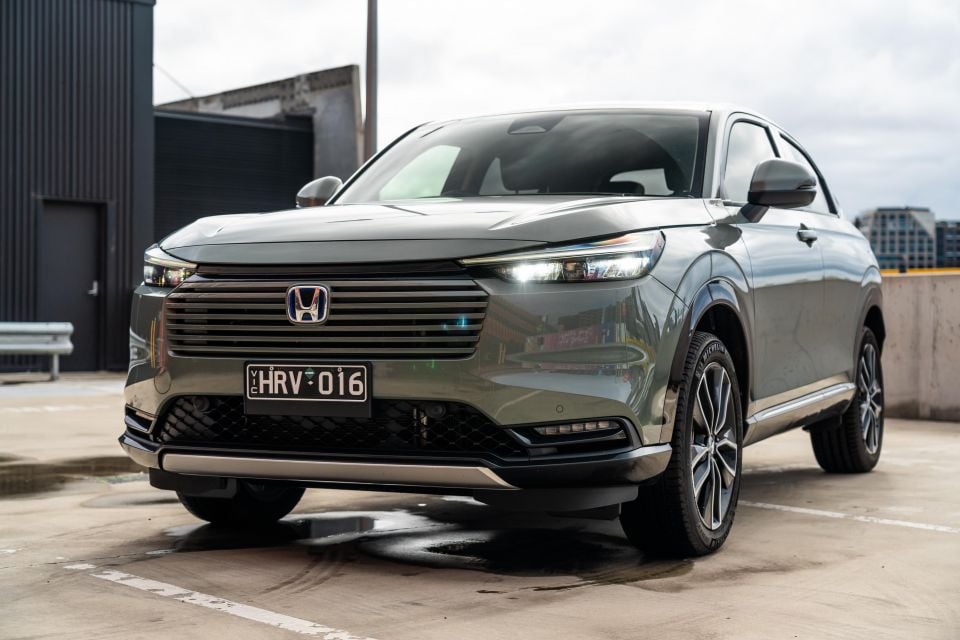
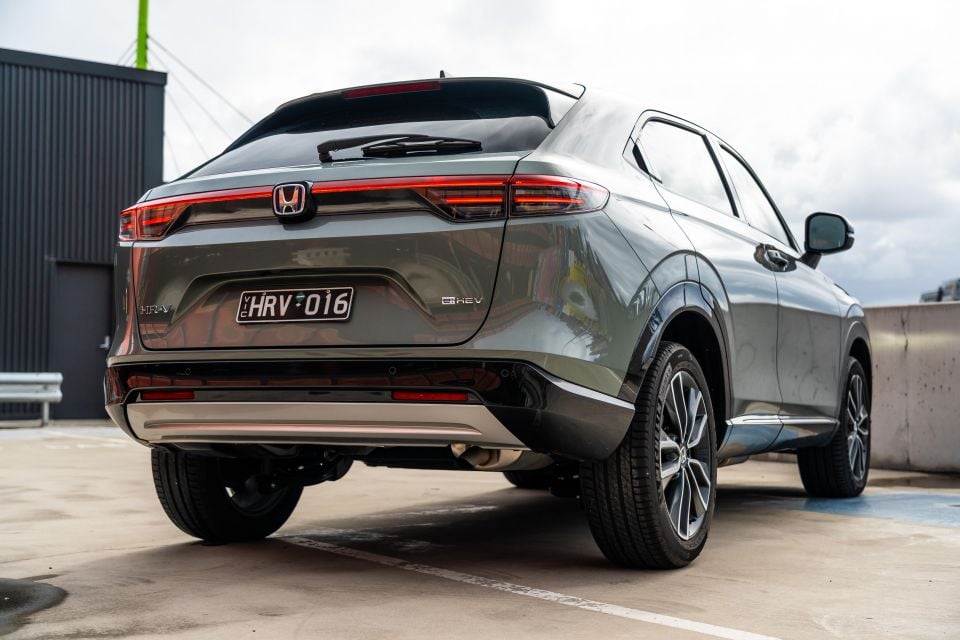

Quickly see how this car stacks up against its competition. Select any benchmark to see more details.
Where expert car reviews meet expert car buying – CarExpert gives you trusted advice, personalised service and real savings on your next new car.
Our three-month tenure with Honda’s smallest SUV has come to an end, and returning the HR-V e:HEV X has left us with plenty to unpack.

Unlike typical long-term car reviews where one journalist is gifted the majority of seat time, this HR-V was shared between myself and deputy marketplace editor Josh Nevett – the two youngest members of the CarExpert editorial team with wildly different use cases (he lives near Melbourne’s CBD and I’m well out of town).
Josh broke down the basics of the HR-V in the introduction we published in May, and it’s now my turn to give you an insight into what our time with the car was like, and sum up our thoughts. For balance, we’ve added Josh’s thoughts towards the bottom of this review.
All up, we clocked up a couple thousand kilometres in the HR-V over those three months, and my driving tasked it with long- and short-distance commuting, inner-suburb errand running, and full-capacity carpooling, providing a broad snapshot of HR-V life.
I also reviewed the same spec of HR-V in our normal seven-day format earlier this year, so this was a good opportunity to see how those takeaways stack up over the longer term.
To see how the Honda HR-V stacks up against its rivals, use our comparison tool
As is expected of Honda, the HR-V boasts exceptional design and build quality, both inside and out, although the exterior is smart but doesn’t exactly stand out from the small SUV crowd.
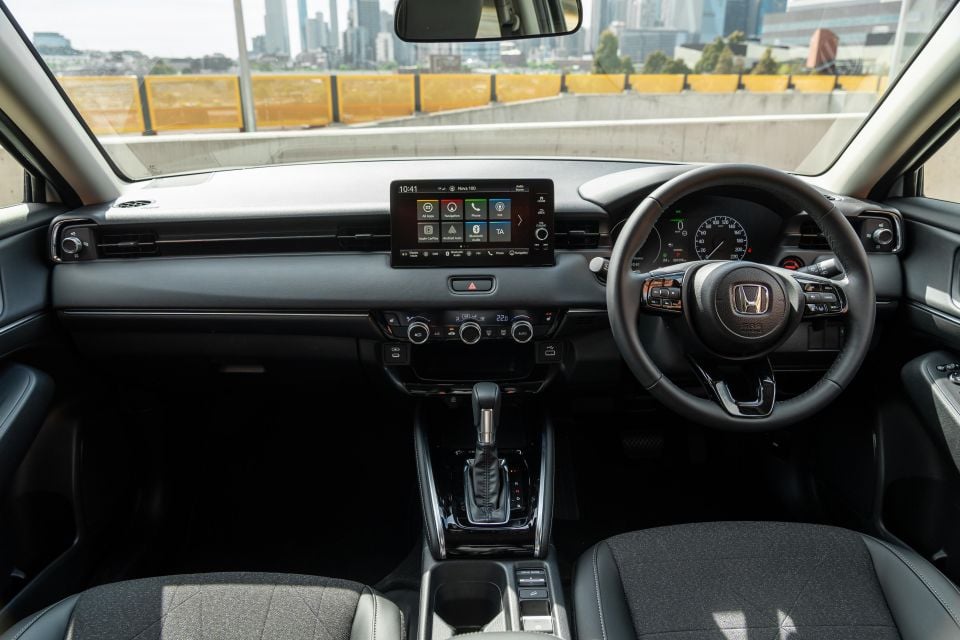
With a simple, conventional interior, the HR-V feels like it was built to be as user-friendly as possible. It still looks good too, and we like that many physical buttons have been retained – there’s no diving into touchscreens to adjust the air-conditioning here, for example, and the centre stack dials in particular are satisfying to use with their notchy feel.
Many of the surfaces are finished in some form of synthetic leather, which also means they’re soft. There are similar accents to the otherwise cloth seat trim, an upholstery option we appreciate given the occasional warm day in Melbourne.
We didn’t have any issues staying comfortable in these seats on longer drives either, as they’re also soft yet supportive. Hopping in on colder days was made easier by the cloth, but you also get two-setting seat heaters. Unfortunately no seat ventilation, but that’s generally only required for all-leather seats.
We also like the chunky steering wheel and its buttons despite the latter being glossy and grime-prone, and the layout of everything just feels deliberate and purposeful, making this a highly ergonomic vehicle. Better yet, we didn’t hear any interior rattles or squeaks either.
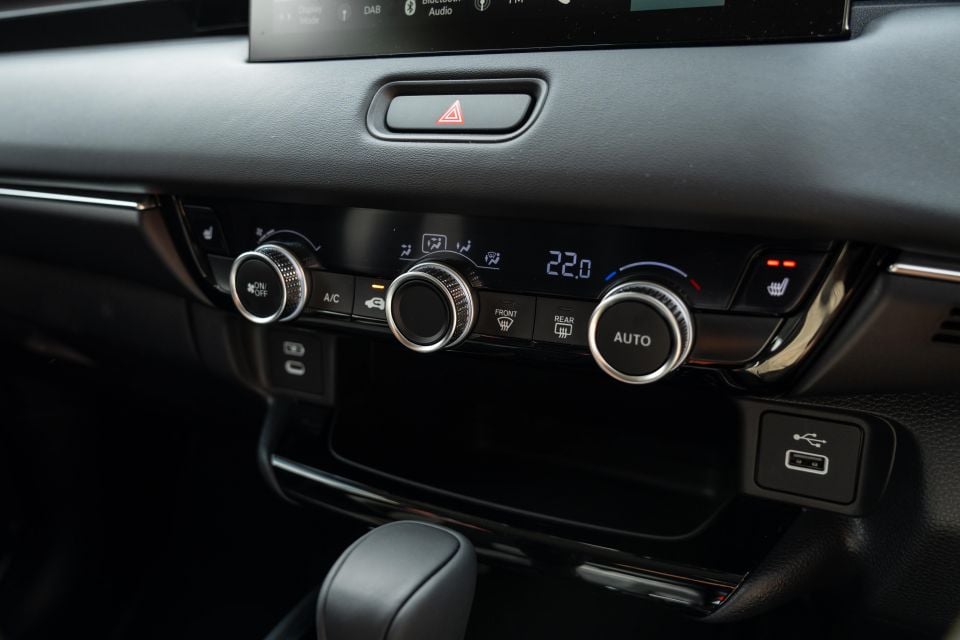
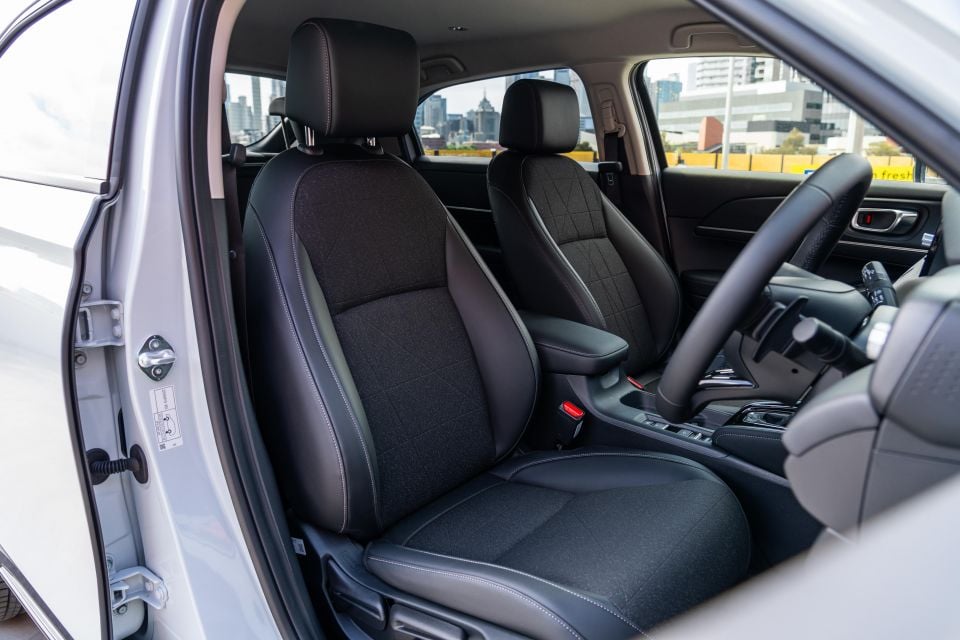
Once you get moving, Honda’s hybrid system comes into its own. It’s quiet at low speed and prioritises electric power, while transitioning to the petrol engine is seamless and happens at the right time.
You get a decent kick from a standstill too, as there’s that instant electric torque helps the car feel zippy around town. This also has fuel economy benefits that we’ll detail further down.
It isn’t the best-sounding engine you’ll ever hear, but Honda has a fun way of getting around the drone produced by the CVT automatic. There are programmed ‘gear’ steps that only reveal themselves at high revs, when the transmission will shift through them as if they are real.
This is even more pronounced in Sport mode, and because there’s no lag between any of the ‘gears’, you get the feeling of lightning-fast shifts. If you want your non-performance Honda to feel like something a bit peppier, this is the closest you’ll get.
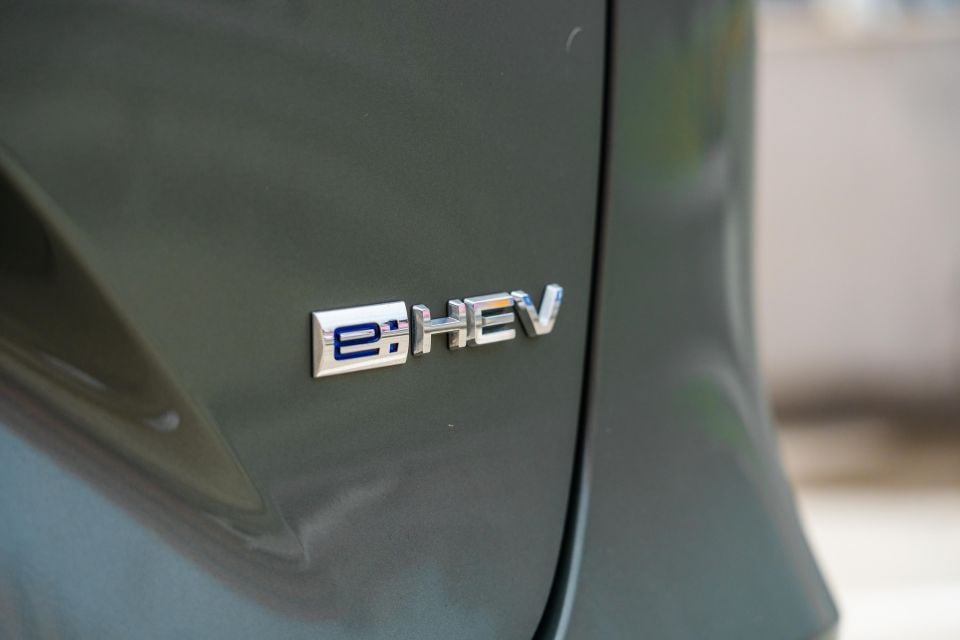
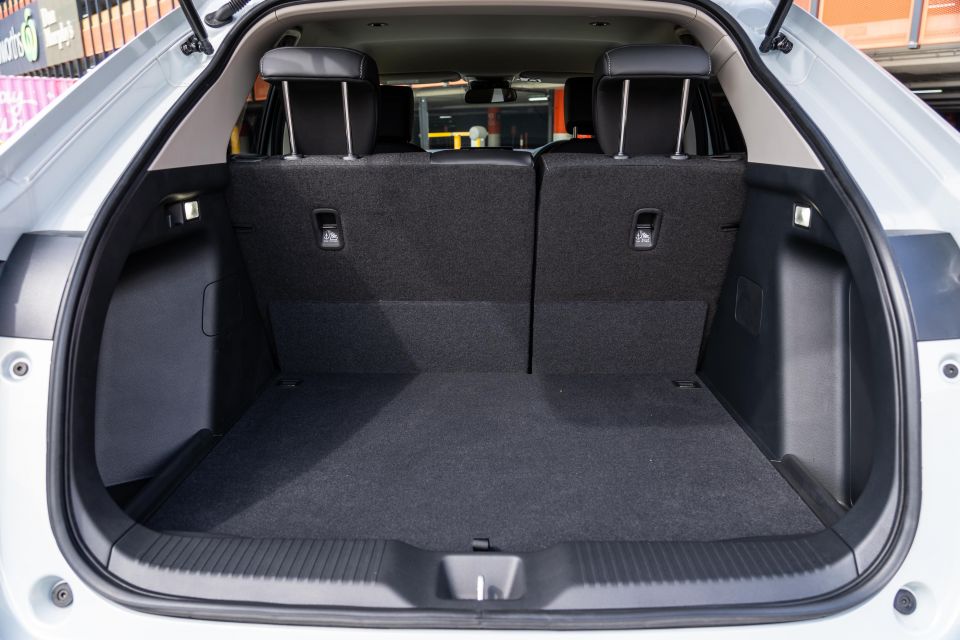
Seating capacity aside (for now), the HR-V can also be quite practical. Boot space isn’t incredible on paper, but you can actually pack a lot in – this is supported by the Magic Seats that can fold to open up more space in the boot, or lift to create space in the second row.
As mentioned in our introduction, you can comfortably fit something as large as a cricket bag in the boot, and I was able to squeeze in a full-size golf bag without collapsing the rear seats. This was very useful because it allowed me to fit occupants in all of the HR-V’s seat, and plenty of their gear.
Beyond that there’s Honda’s capped-price servicing, which offers five standard services at an astounding price of just $199 each.
That’s one of the cheapest service prices you’ll find in the small SUV segment, and a big drawcard for newcomers to the Honda brand.
To see how the Honda HR-V stacks up against its rivals, use our comparison tool
The elephant in the room is the seating arrangement. There are only two seats in the rear, as the middle of the back bench cannot legally be used as a seat because there’s no seatbelt.
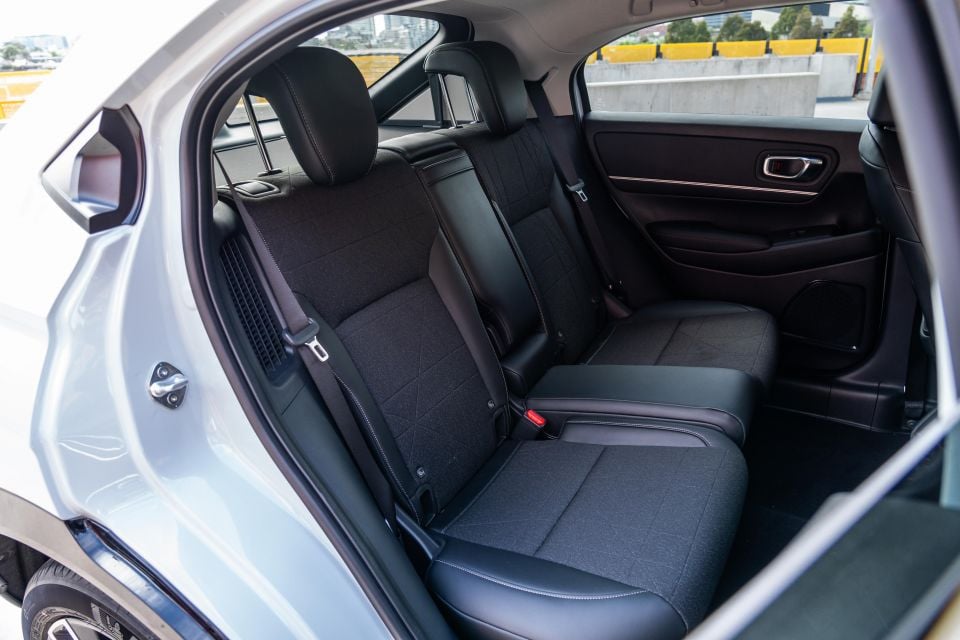
Why, I hear you ask? It’s simply because Honda wouldn’t engineer a top-tether point for the middle seating position, something that’s mandated by Australian Design Rules (ADR) for any nominated rear seat with a seatbelt. Honda’s solution was to fit nothing at all.
This is despite the HR-V being offered as a five-seater in some overseas markets. We’ve said in reviews time and again that this is seriously disappointing, as it limits the practicality of this vehicle – there’s also no spare wheel and little under-floor boot storage.
What you get instead is a standard fold-down armrest and a little more bolstering for the seat bases. We can’t imagine the back of the HR-V would be that comfortable if all three seating positions were usable, but the fact this car is only a four-seater severely limits its appeal for many buyers, whether they have families or not.
There were several occasions when the HR-V couldn’t fit in everyone I needed to ferry, and almost every other SUV on the market – including direct rivals like the Toyota C-HR and Mazda CX-30 – have at least five seats for good reason.
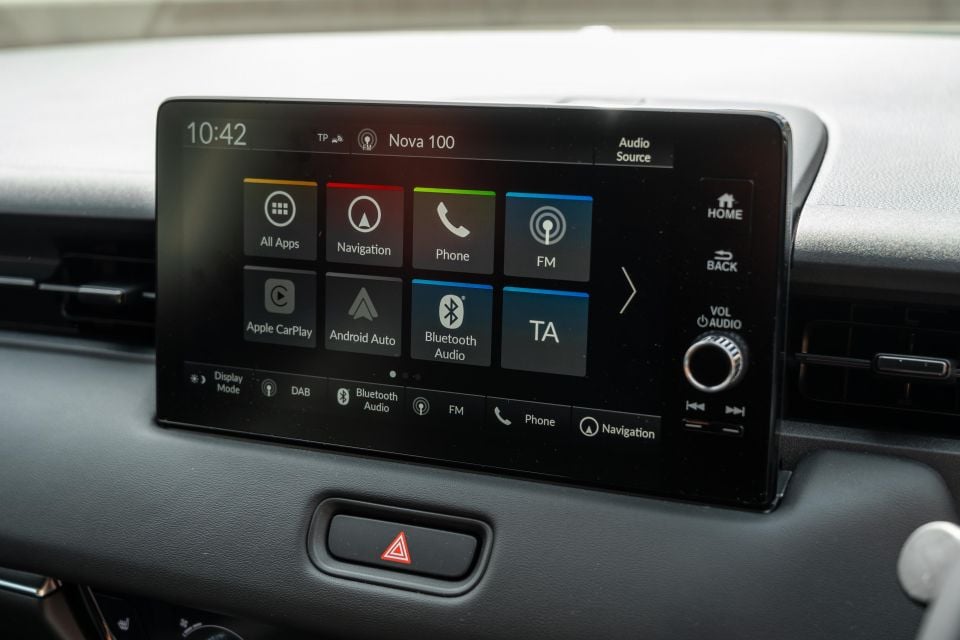
Then there’s the infotainment situation. We’ve heard complaints that the screen is too small, but we don’t think this is the end of the world.
What’s more difficult to live with are the inconsistencies with Apple CarPlay. The HR-V supports wireless CarPlay, but more often than not my phone wouldn’t connect.
To avoid messing around with getting one device to forget the other and reconnect everything from square one, a wired connection was the way to go. The USB ports are located in plain sight and are easy to find in low light, which helps when plugging in a cable.
I’m not the biggest fan of the multimedia screen’s native graphics, but the large boxes are easy to read. Similar could be said for the simple half-digital instrument cluster, but I still like the way everything is laid out here ahead of the driver.

Finally there’s the price, which is a bit hard to swallow for an SUV of this size. Our e:HEV X tester sits in the middle of the three-variant HR-V range, but at $39,900 drive-away it’s only $3000 cheaper than the flagship model.
It’s also the cheapest hybrid HR-V available, with the sole petrol variant opening the lineup at $34,900 drive-away. The hybrids are no doubt the variants to go for, and in that context they’re still cheaper than a C-HR ($42,990 before on-roads).
But at base level the HR-V is clearly more expensive than its rivals. The CX-30 starts at $34,655 before on-roads, the MG ZS Hybrid+ at $33,990 drive-away, the non-hybrid Nissan Qashqai at $34,665 before on-roads, and the Hyundai Kona at $32,500 before on-roads, for example.
This has likely contributed to the HR-V’s relatively low sales figure in the first half of 2025, when Honda delivered 2403 examples, which is much fewer than the Kona (11,241), ZS (10,177), CX-30 (6202) and Qashqai (2783).
To see how the Honda HR-V stacks up against its rivals, use our comparison tool
My time behind the wheel of the HR-V ended up being fairly balanced, and included similar amounts of highway, suburban, and inner-city driving. I spend most of my seat time commuting, so we’ll start there for a broad baseline against its competitors.
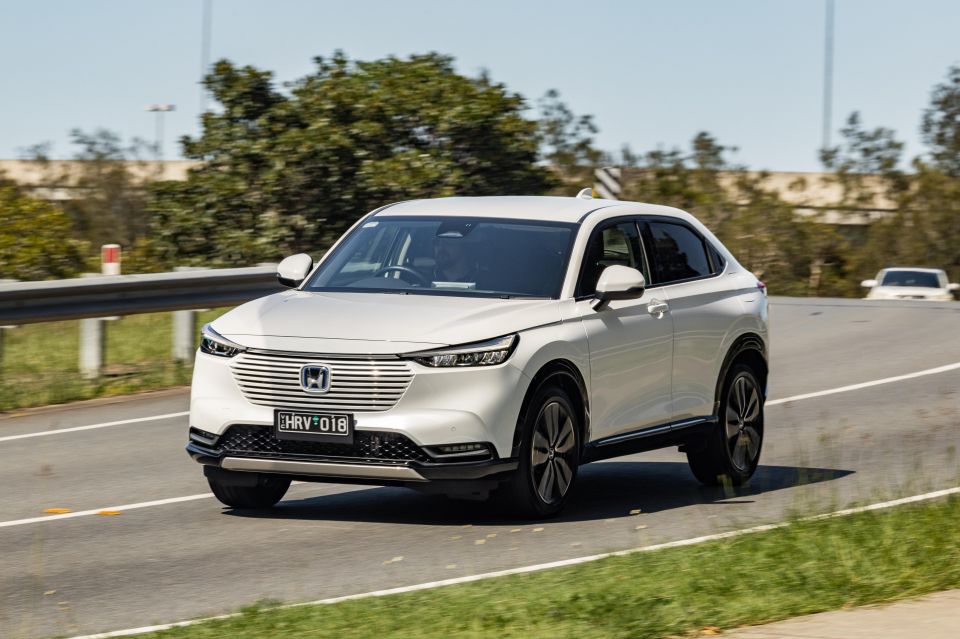
On average, my one-way commute takes around one hour and is comprised largely of highway driving. This provides not only plenty of time to get acquainted with the front of a car’s cabin, but also to feel how the car behaves at around 100km/h as well as when crawling in traffic.
Despite its relatively soft suspension setup, the HR-V feels good at speed. It’s planted on the highway, which you may not expect given its relatively narrow tyres and reasonably high ride height, which does offer a good view of the road.
I had no issues trundling along and the car feels quite comfortable at 110km/h. It’s also able to soak up larger bumps and undulations without throwing you around too much, which meant I never dreaded driving it on the long haul to or from work.
There’s a noticeable reduction in engine and handling performance when fully laden, but the ride also becomes smoother with additional passengers and cargo.

Having extra weight over the rear axle creates quite a comfortable ride, which is something I noticed over the course of a week when I used the HR-V to ferry three friends back and forth between Melbourne’s outer suburbs and its stadium precinct.
Each passenger had plenty of space too, even in the back. Of course the HR-V could never be an Uber given it lacks five seats, but it’s surprisingly good at transporting up to four people.
Honda is renowned for its ride/handling expertise, and despite a distinct lack of body roll compared to many of its competitors, the HR-V does offer quite a plush ride, especially alongside cheaper variants of the CX-30 or Qashqai, for instance.
The car also has no issue ploughing over tram tracks, and inner-city driving is easy thanks to its small dimensions. It’s also quite nimble thanks to a decent turning circle and light low-speed steering, which makes it easy to thread into tight carparks too.
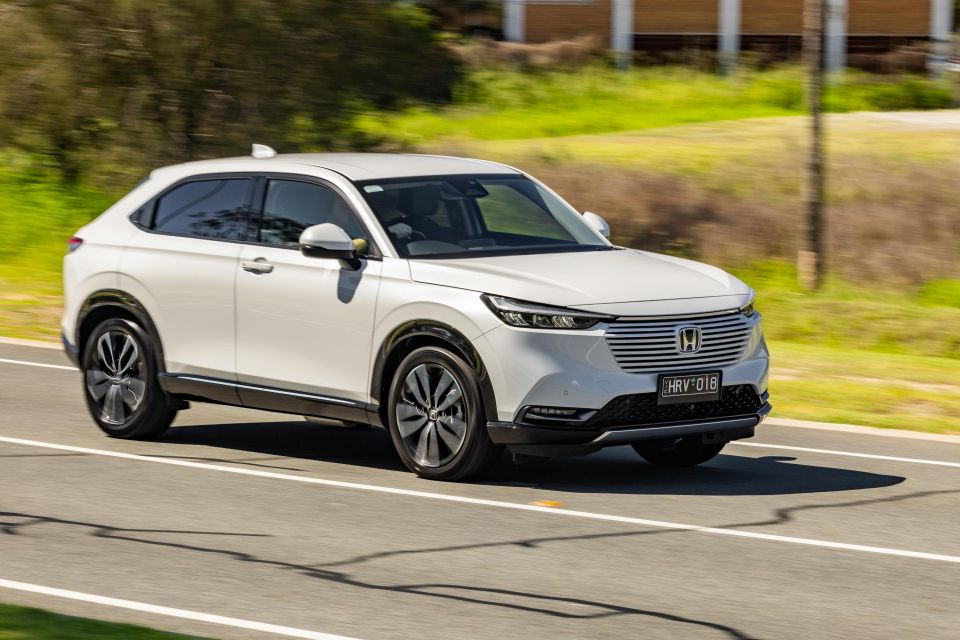
Adding lots of weight does blunt the performance of the car though, and the engine becomes quite shouty under hard acceleration when fully loaded. It’s hardly unbearable during those few rare scenarios though.
The hybrid system more than makes up for it. Over the course of three months our fuel economy hovered around the 5,0L/100km mark – a remarkable figure given the variety of driving we subjected it to, and Honda’s claim of 4.3L/100km.
That said, the HR-V only has a 40-litre fuel tank, which means higher-load driving can drain it fairly quickly. On several occasions we saw the car travelling at 80km/h in electric mode, so it has the potential to be properly efficient if the conditions and driving behaviours align.
All that points to quite a sophisticated hybrid powertrain, just like those available across Honda Australia’s entire model range.
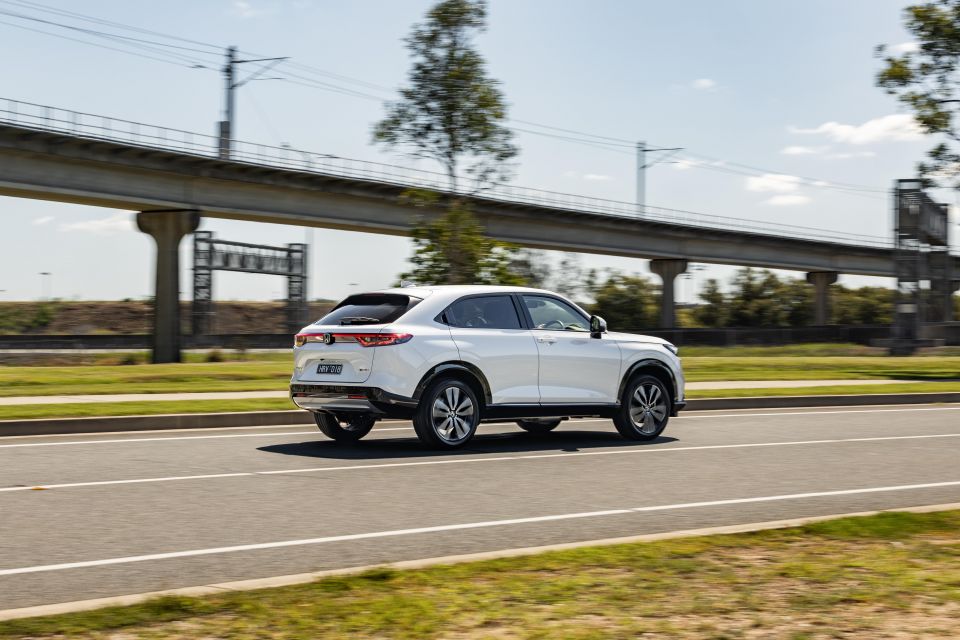
Unlike some cars that can take more than a one-week test to feel comfortable in, we felt at home in the HR-V after just a few days, which is testament to how easy the car is to operate and drive.
It’s backed up by a solid suite of safety gear, although it does lack a surround-view camera. Once again its small size means it’s easy to park, thanks in part also its generously sized wing mirrors.
The only thing we can complain about here is its adaptive cruise system, which is fairly beepy – for the lack of a better term. It’ll beep when a car moves in front of you and beep when the speed limit changes, neither of which may be entirely necessary.
Otherwise there’s very little to complain about here. In typical Honda fashion, the HR-V e:HEV X is a solid overall package that does almost everything well without standing out in any single area.
Having spent most of my stint in the HR-V stuck in city traffic, I’d surmise that it’s a practical and efficient commuter without deal-breaking flaws.
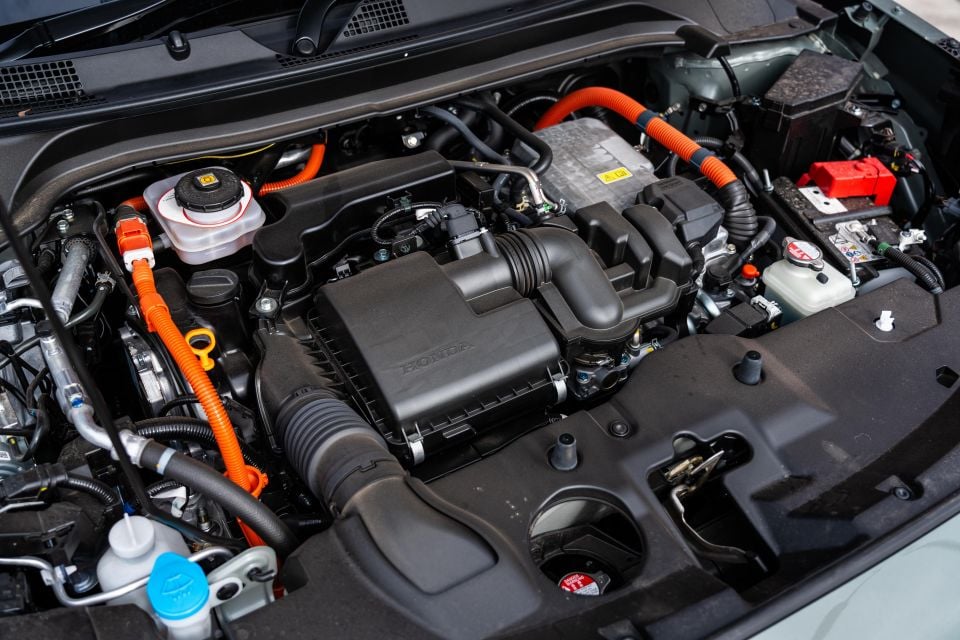
The powertrain won’t set your world on fire, but it’ll be cheap to run and likely dependable. The adaptive cruise control works a treat, too, and it’s a feature that’s more important to me than most.
Likewise, the interior was designed with function over form in mind. Honda’s famed ‘Magic Seats’ never cease to impress, and the HR-V is well equipped to handle the demands of a small family.
The lack of reliable wireless smartphone mirroring is an annoyance, though, and the four-seat cabin design unimaginative.
Personally, I’d be after something with a little more personality for the money, but the HR-V should still tick plenty of boxes for many small SUV buyers.
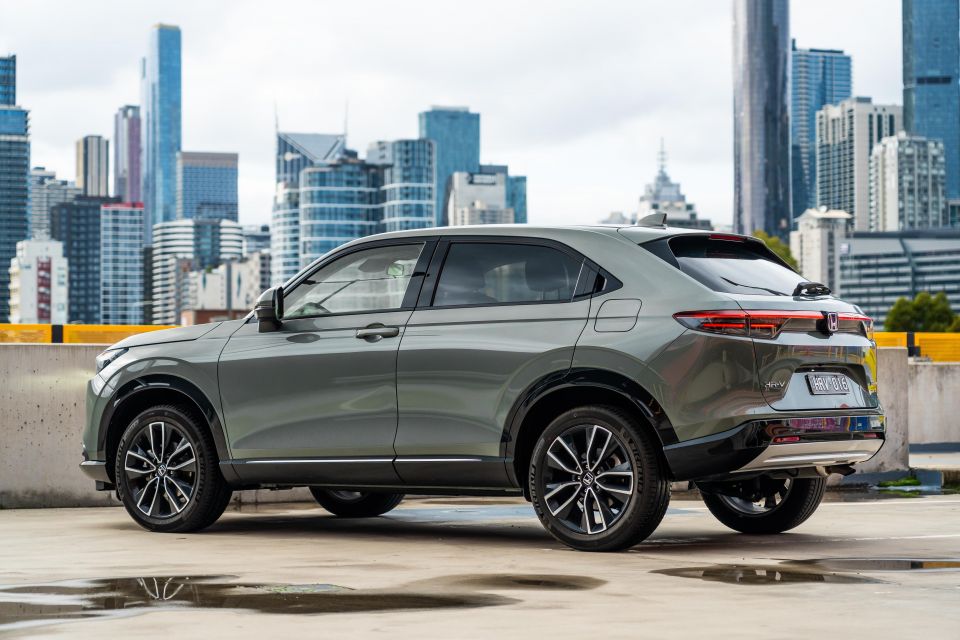
Where expert car reviews meet expert car buying – CarExpert gives you trusted advice, personalised service and real savings on your next new car.
Interested in buying a Honda HR-V? Let CarExpert find you the best deal here
Click the images for the full gallery
MORE: 2025 Honda HR-V e:HEV X review – Long-term introduction
Where expert car reviews meet expert car buying – CarExpert gives you trusted advice, personalised service and real savings on your next new car.
Max Davies is an automotive journalist based in Melbourne, Australia. Max studied journalism at La Trobe University and stepped into the automotive world after graduating in late 2023. He grew up in regional Victoria, and with a passion for everything motorsport is a fan of Fernando Alonso.


Andrew Maclean
1 Month Ago
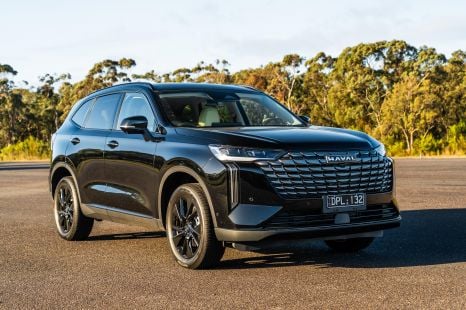

Josh Nevett
1 Month Ago
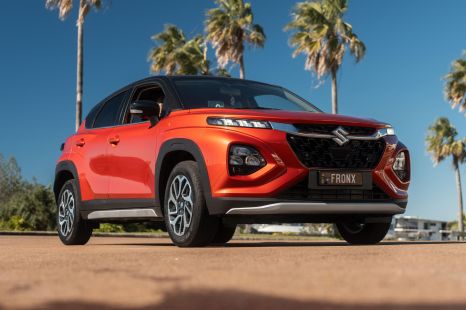

William Stopford
1 Month Ago
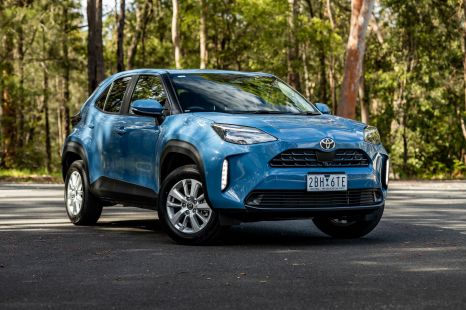

Matt Campbell
1 Month Ago
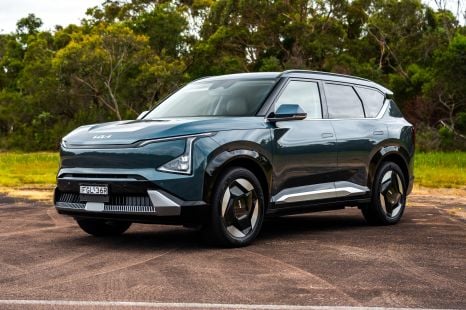

James Wong
25 Days Ago
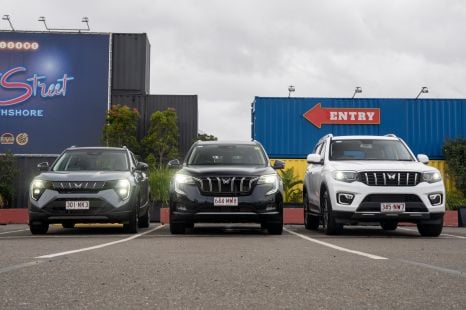

CarExpert.com.au
18 Days Ago